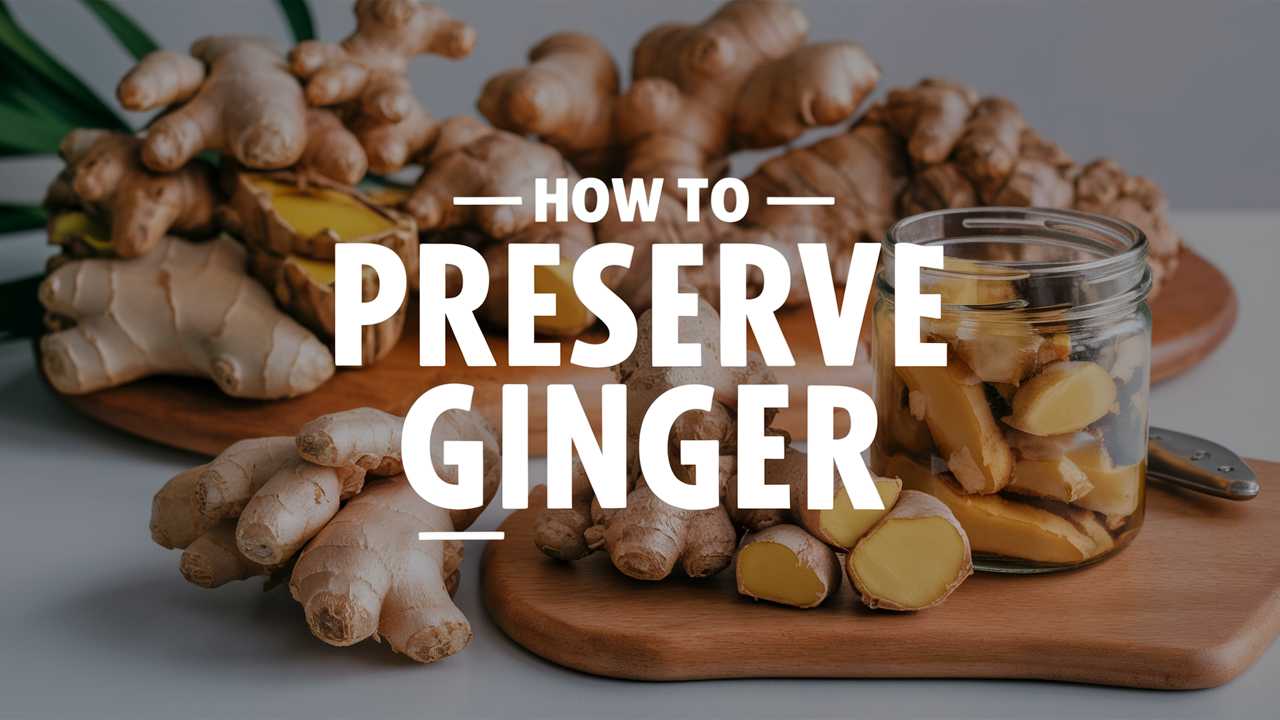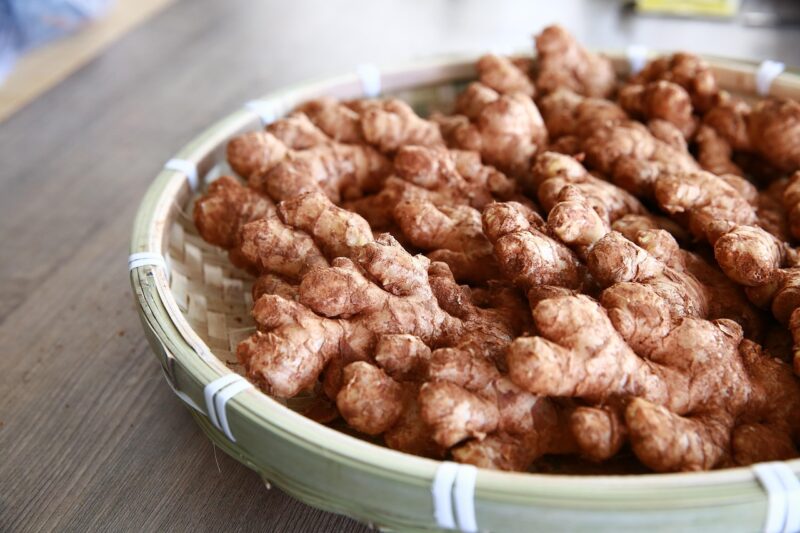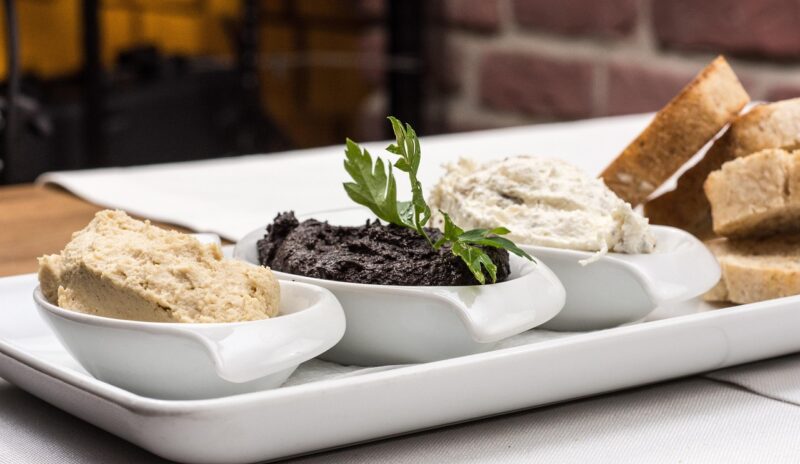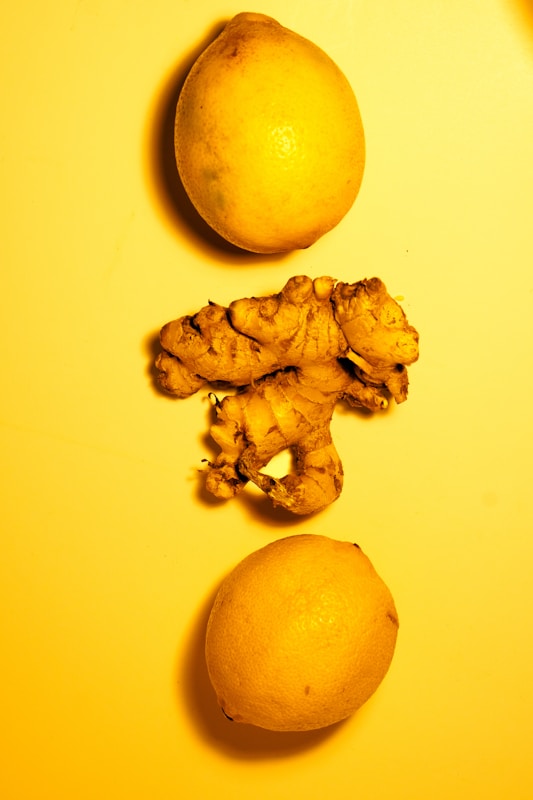This guide will not only explore various methods of preserving ginger but will also share interesting anecdotes and tips along the way, ensuring that you can enjoy this remarkable root at its best for an extended period.
Preparing Ginger for Preservation
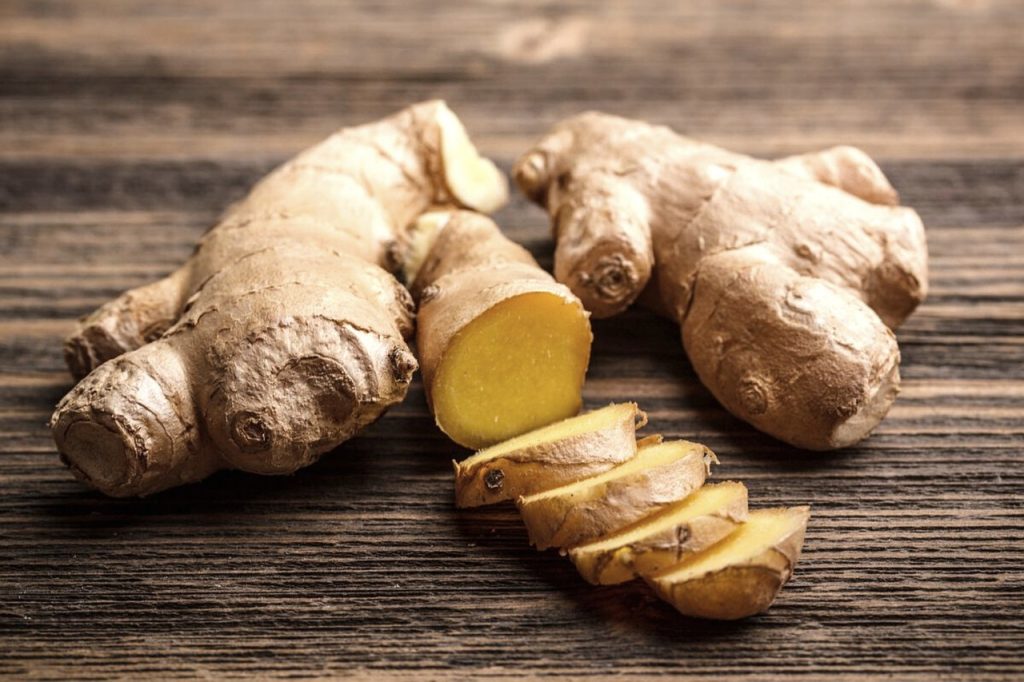
Once you have your ginger root, the first step in the preservation process is preparation. This ensures that the root not only retains its flavor but also stays safe from spoilage.
Cleaning
Begin by washing the ginger under cold running water to remove any dirt or debris. Using a vegetable brush can be beneficial for cleaning the skins. Remove any stubborn bits of dirt with a knife.
Peeling (Optional)
Peeling is a matter of personal preference. For many culinary applications, it’s perfectly acceptable to leave the skin on, as it contributes to flavor and nutrients. However, if you’re looking to achieve a milder taste or if the skin appears tough, peeling the ginger is advisable. A simple, thin slice with a vegetable peeler should do the job.
Cutting
Once you’ve decided whether to peel or not, the next step is cutting the ginger root. Depending on your preservation method, you might slice it, chop it, or even grate it. Each preparation adds a different texture and flavor profile to the ginger, which can influence how it is used later.
Methods of Ginger Preservation
Now, let’s explore various methods to preserve ginger. Each technique offers unique benefits, catering to different culinary needs and personal preferences.
Freezing Ginger
Freezing is one of the simplest and most effective methods of preserving ginger. By freezing ginger, you lock in its flavor and nutritional properties.
Preparation for Freezing
Start by washing, peeling (if desired), and cutting the ginger into desired shapes. You can freeze whole roots, slices, or grated ginger.
Ideal Freezing Techniques
Whole Root: Simply place the unpeeled, washed ginger in a freezer-safe bag. Make sure to squeeze out as much air as possible before sealing.
Sliced: Cut the ginger into thin slices, arrange them on a parchment-lined baking sheet, and freeze for a few hours. Once frozen, transfer the slices to a freezer bag.
Grated: Grating ginger before freezing can save you time later. Grate it directly into an ice cube tray, add water, and freeze. Once solid, transfer the cubes to a bag.
How to Use Frozen Ginger
Frozen ginger can be used directly from the freezer; there’s no need to thaw. Just toss a piece into soups, stews, or stir-fries. You’ll be amazed at how well the flavor holds up.
Ginger Paste
Creating ginger paste is another effective method for preservation, particularly if you enjoy the convenience of having it ready for cooking.
Making Ginger Paste
Ingredients: The basic ingredients are fresh ginger and oil (like vegetable or olive oil).
Process: Blend freshly peeled ginger with enough oil to make a smooth paste. The oil acts as a preservative while enhancing flavor.
Storage: Transfer the paste to an airtight container and refrigerate. For longer shelf life, you can freeze it in ice cube trays and store the cubes in a bag.
Culinary Applications
Ginger paste can be a quick starting point for curry bases, marinades, or dressings. Many Indian cooks swear by having ginger paste handy to ease the cooking process in their busy kitchens.
Pickling Ginger
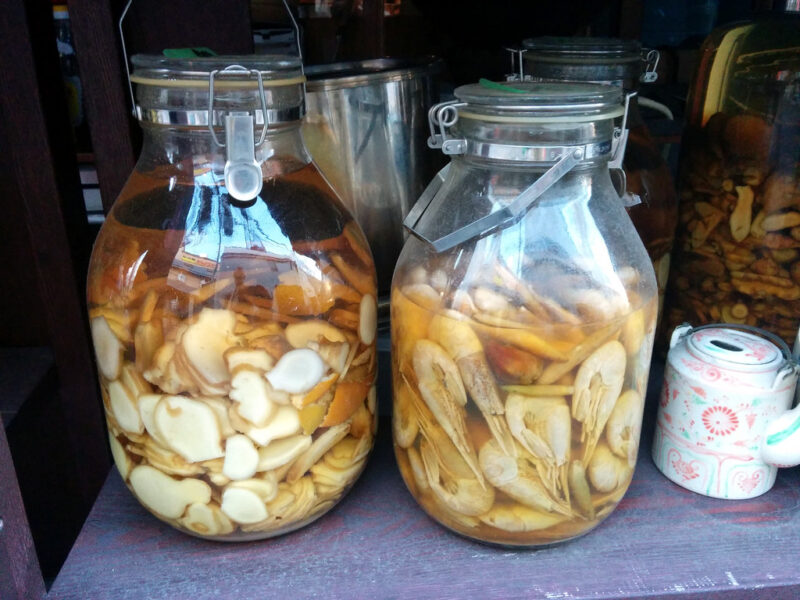
Pickled ginger not only preserves the root but also transforms its flavor, making it a wonderful condiment or accompaniment to various dishes.
The Pickling Process
Ingredients: You will need fresh ginger, vinegar (rice vinegar works wonderfully), sugar, and salt.
Preparation: Peel and slice the ginger thinly. In a saucepan, combine vinegar, sugar, and salt. Heat until dissolved.
Mix: Place the ginger slices in a sterilized jar and pour the hot vinegar mixture over the ginger until submerged. Seal it and allow it to cool before refrigerating.
How to Serve Pickled Ginger
Pickled ginger is commonly served with sushi, but it can also enhance salads, sandwiches, and served alongside grilled meats. Its zesty flavor adds a delightful contrast to rich dishes.
Ginger in Syrup
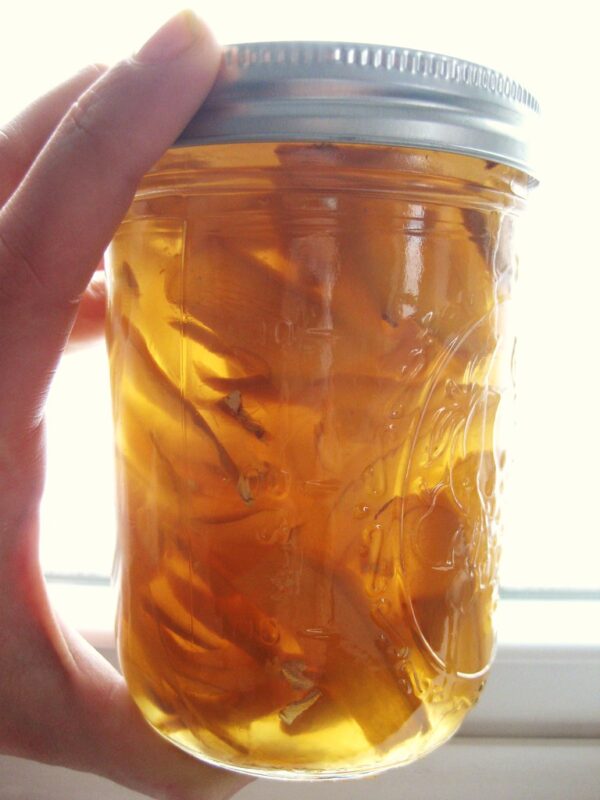
Preserving ginger in syrup offers a sweet way to enjoy the root while extending its shelf life.
Steps to Make Ginger Syrup
Preparation: Peel and slice the ginger into coins or sticks.
Cooking: In a saucepan, combine equal parts of water and sugar, adding the ginger. Bring it to a boil and then let it simmer for about 30 minutes.
Storage: Once cooled, transfer the ginger and syrup to a clean jar and refrigerate.
Creative Uses for Ginger Syrup
This sweet syrup can be used in drinks—like tea or cocktails—or drizzled over desserts like ice cream or pancakes. It’s a versatile ingredient that elevates many recipes while giving you the warmth of ginger.
Drying Ginger
Drying ginger is an ancient method of preservation that results in a concentrated flavor profile.
Drying Techniques
Dehydrator: Slice ginger thinly and arrange the pieces on the dehydrator trays, setting it to 135°F (57°C). Depending on humidity, drying may take several hours.
Oven Drying: Preheat your oven to the lowest setting (around 150°F or 65°C). Place ginger slices on a baking sheet and leave the door slightly ajar to allow moisture to escape.
Air Drying: In a warm, dry place, hanging ginger pieces can also work, though it may take longer.
Storage of Dried Ginger
Once fully dried, store ginger in an airtight container away from light and heat. It can last for months, but the flavor will gradually diminish over time.
Cooking with Dried Ginger
Dried ginger is often used in spice blends, baked goods, or infused in teas. Keep in mind that it may have a slightly different taste than fresh ginger, so adjusting your quantities might be necessary.
Troubleshooting Common Preservation Issues
During the preservation process, you may encounter challenges. Here are some tips to troubleshoot common issues:
Freezing Issues: If ginger clumps together in the freezer, consider flash freezing it (spreading it on a baking sheet before bagging).
Browned Ginger Paste: Exposure to air can cause ginger paste to brown. Always store it in an airtight container, covered with a thin layer of oil if necessary.
Soft Pickled Ginger: If the texture of your pickled ginger is softer than desired, it may be due to thick slicing. Try slicing thinner next time for a more desirable crunch.
Health Benefits of Preserving Ginger
Preserving ginger not only prolongs its shelf life but also retains its health benefits. Ginger has a long history of use in traditional medicine and is renowned for its:
Anti-inflammatory Properties: Gingerol, the active compound, is known to reduce inflammation, making it helpful for conditions like arthritis.
Digestive Aid: Consuming ginger can alleviate nausea and is often recommended for motion sickness or morning sickness during pregnancy.
Antioxidant Benefits: Ginger is rich in antioxidants, which can help combat oxidative stress in the body.
Personal Reflection
Having always been a fan of ginger’s flavor, learning about its preservation led me on a journey into its health benefits and culinary versatility. I’ve experienced the joys of sipping on ginger tea during colds and the warmth that ginger-infused dishes bring during winter. Each preservation method has become part of my cooking routine, enhancing both health and flavor in my home.
Conclusion: Embracing the Art of Preservation
Learning how to preserve ginger is an endeavor well worth the effort. Whether you choose to freeze, pickle, or dry, each technique offers a way to enjoy ginger’s unique flavors and health benefits well beyond its typical shelf life. As you implement these methods, remember to savor the process and embrace the new culinary adventures that await.


